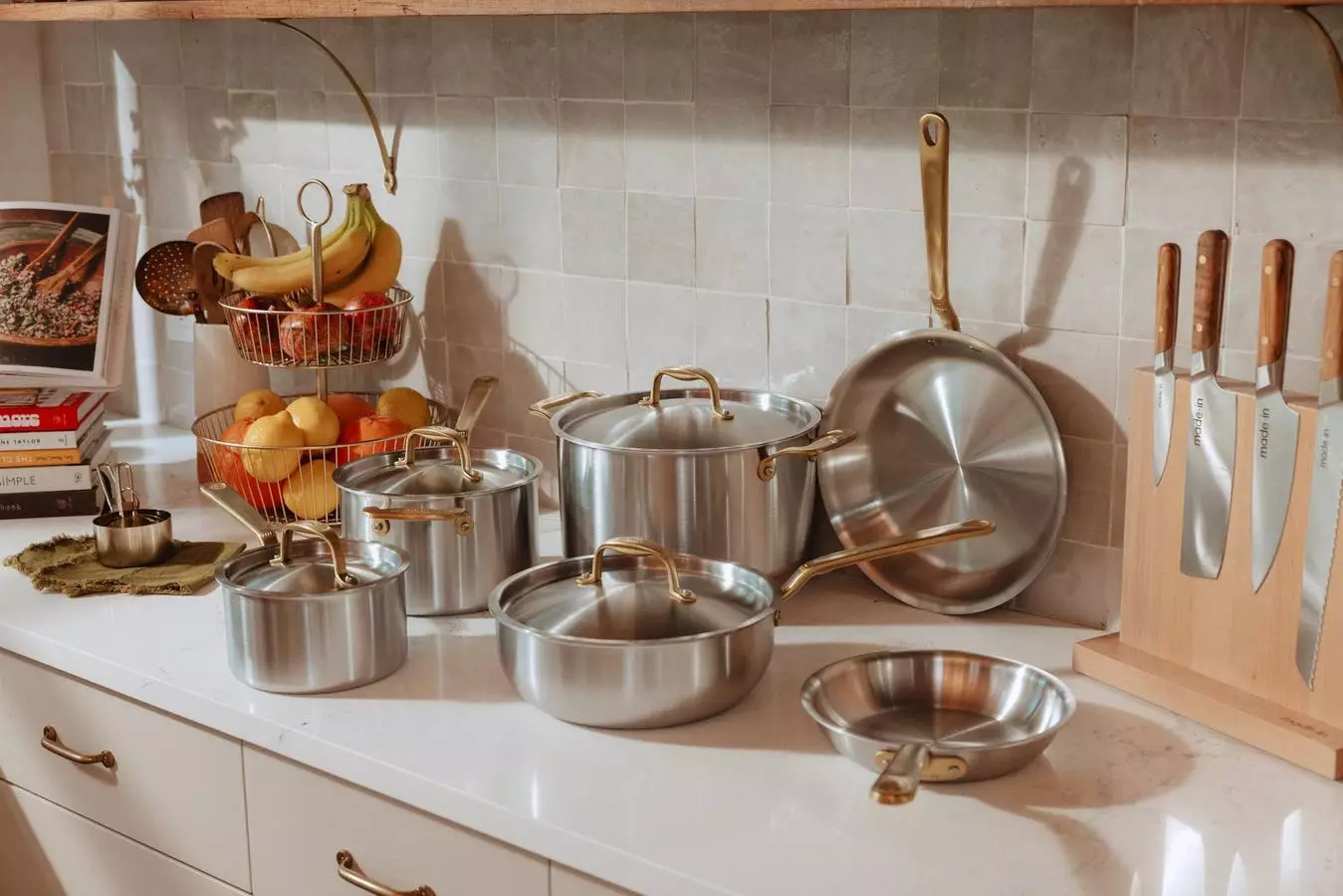In an era where culinary equipment is as much about aesthetics as it is about performance, Made In’s collaboration with Crate and Barrel emerges as a testament to thoughtful branding and meticulous craftsmanship. Rooted in a century-old family restaurant supply legacy, Made In has successfully leveraged its deep industry roots to create a line of cookware that embodies both professional-grade functionality and sophisticated design. This merger isn’t merely about selling pots and pans; it’s about positioning themselves as a symbol of culinary mastery. The inclusion of brass-inspired hardware handles and deliberate design accents elevates the brand beyond utilitarian use to a more aspirational lifestyle statement. Such a strategy indicates a deliberate effort to appeal to affluent consumers who seek durability and style simultaneously, moving beyond the transient trends of many other direct-to-consumer brands.
This move signifies a shift in the cookware market—where craftsmanship, attention to detail, and heritage become lucrative differentiators. Instead of targeting mass-market affordability exclusively, Made In’s approach underscores that premium kitchenware must transmit a narrative of authenticity and professional-grade quality. They understand that their target demographic values not only performance but also story, heritage, and an aesthetic that aligns with their culinary aspirations. The incorporation of classical hardware design elements, like antique-inspired brass handles, speaks to a sophisticated clientele looking for more than just a functional product; they want a piece of art that enhances their culinary environment.
Strategic Growth: From Professional Kitchens to Mainstream Kitchens
Made In’s deliberate growth trajectory exemplifies strategic patience and a nuanced understanding of their market segmentation. Rather than rushing into mass retail with the reckless abandon that doomed brands like Casper or Allbirds, they have methodically built credibility within professional cooking environments. The brand’s cookware has already earned its place in over 2,000 restaurant kitchens worldwide, including prestigious establishments run by Michelin-starred chefs. This endorsement from culinary experts not only validates the product’s high performance but also fuels aspirational marketing aimed at serious home cooks. By establishing a foundation of credibility within the professional domain, Made In creates a aspirational ladder—professional quality at the top, and enthusiastic home chefs just below.
This thoughtful segmentation helps not only in building brand authority but also in framing the product as a must-have for those dedicated to elevating their cooking. The limited yet strategic expansion into brick-and-mortar stores like Crate and Barrel signals a recognition that premium cookware must be experiential—consumers need to see, touch, and feel the quality firsthand to be convinced of its value. This move underscores a commitment to quality over quick expansion and reflects a deep understanding that establishing trust and reputation takes time, especially in the high-end segment where durability and longevity are paramount.
Innovative Marketing: Connecting Passion with Authenticity
One of the most compelling narratives in Made In’s growth story lies in its innovative marketing strategy—particularly its reliance on content creators and culinary influencers instead of traditional advertising. Unlike many brands that bombard consumers with sales pitches, Made In leverages authentic storytelling via online chefs and creators who genuinely incorporate their products into their cooking routines. This strategy transforms product placement into a natural part of engaging content, making the brand both relatable and aspirational simultaneously. The “Anti-Chef,” Jamie Tracey, exemplifies this approach—someone who bridges the gap between professional expertise and everyday accessibility.
This influencer-centric model reflects a fundamental shift in consumer behavior, where passion and authenticity are more persuasive than conventional advertising. By working with chefs, bread bakers, barbecue experts, and content creators, Made In nurtures a community that values skill, learning, and craftsmanship. These forms of engagement foster trust, encourage content sharing, and ultimately build a loyal customer base that perceives the brand as part of their culinary journey. Such a strategy not only enhances brand credibility but actively encourages the transition of casual cooks into serious enthusiasts—a critical step for sustained growth in the competitive cookware landscape.
Balancing Ambition with Long-Term Vision
Made In’s methodical approach to market entry exemplifies a sophisticated understanding of brand maturation. Entering retail slowly, starting with specialty shops and gradually expanding into national chains like Crate and Barrel, demonstrates a disciplined commitment to quality and reputation. Their choice to delay rapid expansion reflects an awareness that high-end brands succeed when they are perceived as timeless and durable—not fleeting trends. Moreover, their expansion plans beyond U.S. borders display a keen strategic vision: they recognize that global markets, especially the UK and Australia, are ripe for the same quality-focused, chef-driven narratives.
Such deliberate pacing in scaling operations illustrates a firm grasp of brand equity. Rather than succumbing to the temptation of quick profits, Made In invests in building a reputation rooted in authenticity, durability, and professional validation. This strategy ensures that their brand sustains and grows organically—an essential factor in the premium segment, where consumer loyalty is built over years rather than months. The recent partnership with Wrangler exemplifies a creative extension of their brand, connecting culinary craftsmanship with a rugged Americana aesthetic—an emotive branding move that regionalizes their identity and broadens their appeal.
Without rushing into the crowded arena of quick-growth startups, Made In exemplifies how patience, strategic partnership, and unwavering focus on quality can cultivate a timeless brand—one that is poised not just to survive but flourish amid evolving consumer expectations.


Leave a Reply